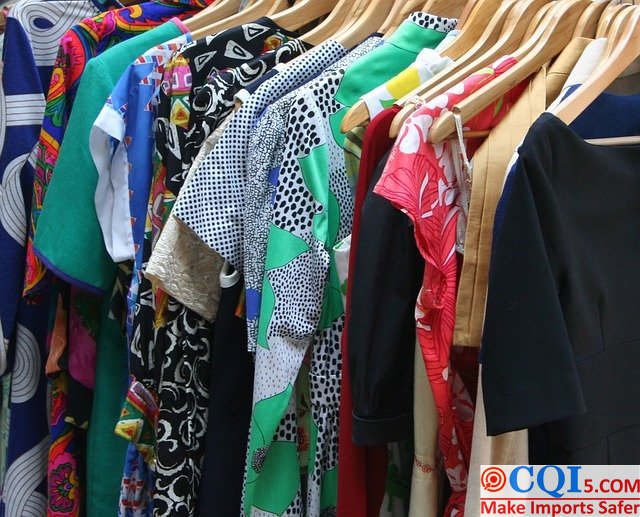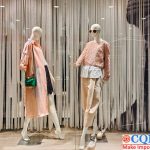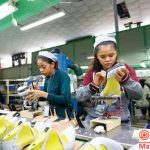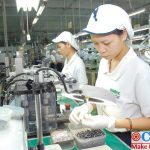Apparel supply chain collaboration process and functional analysis
In the background of the trend of comprehensive and deep penetration of information technology in various industries, the business systems of traditional industries are facing various efficiency challenges, and the supply chain collaboration system of the apparel industry is born with this trend. This article analyzes and summarizes the process and functions of apparel supply chain collaboration, and recommends friends who want to understand the process of apparel supply chain collaboration to read it.
The main functional modules of the apparel supply chain are relatively clear, and the system can be divided into 9 first-level functional modules: material management, design and development management, cost management, procurement management, production management, financial management, supplier collaboration, report management and system setup.
Analysis of design and R&D ┃Apparel Supply Chain
The design and development collaborative process is the starting process of the supply chain system and is the source, and the associated departments are the design department, technology department and commodity department.
There are more nodes in the design and development process, so for the convenience of analysis, the whole process is divided into three parts: planning, design and sample production, which are described in detail below.
1. Planning
The design and development process involves three plans: product planning, design planning and product planning.
Apparel companies are planning according to seasons,usually by the commodity department according to the company’s strategy, historical data, market competition for commodity planning, commodity planning after discussion and evaluation to determine the implementation of the design department.
The design department carries out design planning according to the commodity planning, wave requirements, fashion trends, fabric trends and other fashion information, and the design planning is handed over to the product design team after discussion and evaluation.
The design team carries out specific product planning according to the design elements, fashion elements, cost elements, bands and category requirements in the design planning, determines the pit position, product quantity, cost band and other information of each category to the relevant designers, and completes the whole planning process.
Because the planning process involves a lot of information, the specific process is complex and the time span is long, so generally only the final planning results are recorded in the system.
2. Design
The design process is to record the business process from the design plate to the BOM and the office material to receive
(1) design version list
After the designer designs a specific product list according to the product plan and submits it to the supervisor for review, the order taker enters it into the system to form the most basic information of the sample garment. The list contains all the unique attributes of the sample garment, such as band, cost, category, shape, collar type, design elements, pattern elements, applicable scenes, etc.

2)Sample clothes instruction
After the design version is determined, the design order maker will give the sample production instruction in the system. This step is mainly to inform the technical department to carry out sample production, and the main information contained in the sample production instruction is sample type, sample times, sample pieces, development type (internal/external), whether the materials are all set, etc.
3)R&D BOM
According to the material information on the design plate, the design order taker creates the R&D BOM of the sample clothes in the system. The BOM is a record of all the material information needed for the sample clothes (usually excluding the information of packaging and accessories), and the main items included are the design model number, sample category, sample color, material code, use part, dosage, loss, door width and other information.
3. Sample garment production
Sample production is the process from the design list to the realization of specific sample clothes. The technical department is responsible for the whole process of sample production.
1)Paper pattern production
Paper pattern is the first step of sample production. The pattern designer draws out the paper pattern according to the pattern example and pattern requirements on the design sheet, and then outputs the paper pattern for cutting process after confirmation.
2)Cutting
After receiving the paper sample, the cutting process will cut the fabric (accessories) into different shapes according to the paper sample, and the system record will record the main information such as the time of finishing the cutting, the cutter and the number of pieces cut. If the sample needs secondary processing (e.g. embroidery, printing, ironing, etc.), after the cutting is completed, the design order taker will send out for secondary processing.
3)Sewing
The sewing process is carried out according to the paper sample, cutting piece and design plate, and the system records the sewing date, sewer and other information, and the sample is handed over to the cost department for cost accounting after the sewing is completed.
4)Cost
After receiving the finished sample garment, the cost department will carry out cost accounting. The scope of accounting includes three major parts: material cost, secondary process cost and processing cost. The more complex processing cost is carried out in accordance with the standard working hours and combined by labor cost and working hours, and larger garment enterprises generally have their own standard working hour system (GSD).
After the technical verification is completed, the sample garment is submitted to the design department for sample garment review. If it passes the evaluation, the big goods procurement and production link is carried out; otherwise, it is regarded as canceled, and the whole design development link is completed here.
- 4.Production management collaborative
The production process is the last big process of the supply chain system, and the main department involved is the supplier. Now we analyze the business of production management for further understanding of the business.
1) Order allocation and contract
Order allocation is the first step in the actual business of production management (not including the preliminary work such as supplier inspection). The production planning manager assigns orders according to the actual capacity of the supplier and the advantageous production categories.
After the order is assigned, if the selected supplier evaluates its own capacity and thinks it can produce the batch of orders, the supplier is required to confirm the order in the system, and the order cannot be confirmed if it cannot be produced (generally the production planning manager will communicate directly with the supplier before assigning the order to confirm whether it can be produced or not, to avoid the situation that the supplier’s capacity cannot be matched after the order is assigned). After confirming the order, if the supplier cannot carry out normal production for other reasons, the order confirmation needs to be cancelled and then assigned to other suppliers for production.
After the order is confirmed, the system automatically generates a procurement contract, which is first approved internally by the company (technology and supply chain center). Then the factory confirms it and after confirming the contract, it is officially transferred to the production process.
2)Production tracking and exceptions
Production follow-up is to track the whole garment production process, including the purchase time of fabrics and accessories, cutting time, sewing time, tailing time, etc. Through the follow-up of the process time nodes, we can timely find out whether the order can be warehoused according to the required date.
If it is found that the order cannot be warehoused on the required date, the supplier is required to fill out an extension application form in the system for extension processing, or if quality abnormalities are found during the production process, in addition to filling out the normal sampling records, if the quality of the received goods is affected, it is also required to fill out a quality incident form for quality deduction.
3) Intake
After completing the whole production process, the supplier needs to make an appointment in the system for warehousing. Since there is a certain limitation on the daily quantity of goods received by the warehouse, if the delivery time and quantity of the current appointment have exceeded the quantity of goods received by the warehouse, the system will prompt that the appointment cannot be made and another appointment time needs to be selected for delivery.
After a successful appointment, the supplier will send the garments to the warehouse, which will carry out pre-acceptance. After pre-acceptance, the warehouse will carry out quality inspection after 24 hours to confirm whether the quality requirements are met.
The garments that pass the quality inspection will be scanned and put on the shelves, and the production process will be finished.
This is the whole process of garment from raw material to export.
5. Settlement Management Collaboration
The financial settlement is mainly collaborated between two users: the financial user of the brand and the financial user of the supplier.
The brand finance user generates the statement manually (for ODM) or automatically by the system, and submits it for audit after checking for accuracy.
The supplier finance user receives a reminder in the system, submits the audited statement and detailed data, checks them, confirms that they are correct and submits them, and prints and seals the contract, invoices and mails the relevant information to the brand finance user.
After receiving the invoice and related information, the financial user of the brand owner makes the payment operation and the process ends.
Summary┃Apparel Supply Chain
In the background of the trend of comprehensive and deep penetration of information technology into various industries, the business systems of traditional industries must also face various efficiency challenges. It combines modern supply chain management theory as the basic theoretical basis, supplier collaboration service and related information technology as the important technical support, business process and data flow collaboration of apparel supply chain as the research goal, and information processing process to realize the information processing links and corresponding strategies of apparel supply chain response.
The supply chain collaboration system can enhance the positive interaction between apparel enterprises and external suppliers, provide them with an understanding of the business links of apparel enterprises, participate in the value-added process of apparel value chain, and realize the benefit sharing of both parties. In addition, through the collaborative system, external suppliers can be integrated into the production process to achieve integrated production management, which can realize large-scale production and operation with smaller cost and create more value for the enterprise.
CQI5 is committed to providing importers worldwide with product quality inspection services that far exceed those of our peers. If you are planning to import or have imported from China or Southeast Asian countries, please contact us cs’@’cqipro.com to learn more about how we can make your imports safer.
Disclaimer:
CQI5 article information from the Internet and contributions, the copyright of which belongs to the original author, and only represents the views of the original author. This website is only responsible for sorting out, typesetting and editing the articles, reproduced for the purpose of spreading more information, does not imply that it endorses its views or proves the truthfulness, completeness and accuracy of its content, and therefore does not assume any legal responsibility.
The information contained in this article is for reference only and is not intended as direct advice for decision-making.
If we inadvertently violate your copyright, please inform us, after verification, we will immediately correct or delete the content according to the requirements of the copyright holder, thank you! Contact, email: copyright@cqipro.com
This website has the final right to interpret this statement.
Welcome to reprint, please be sure to keep information complete.





